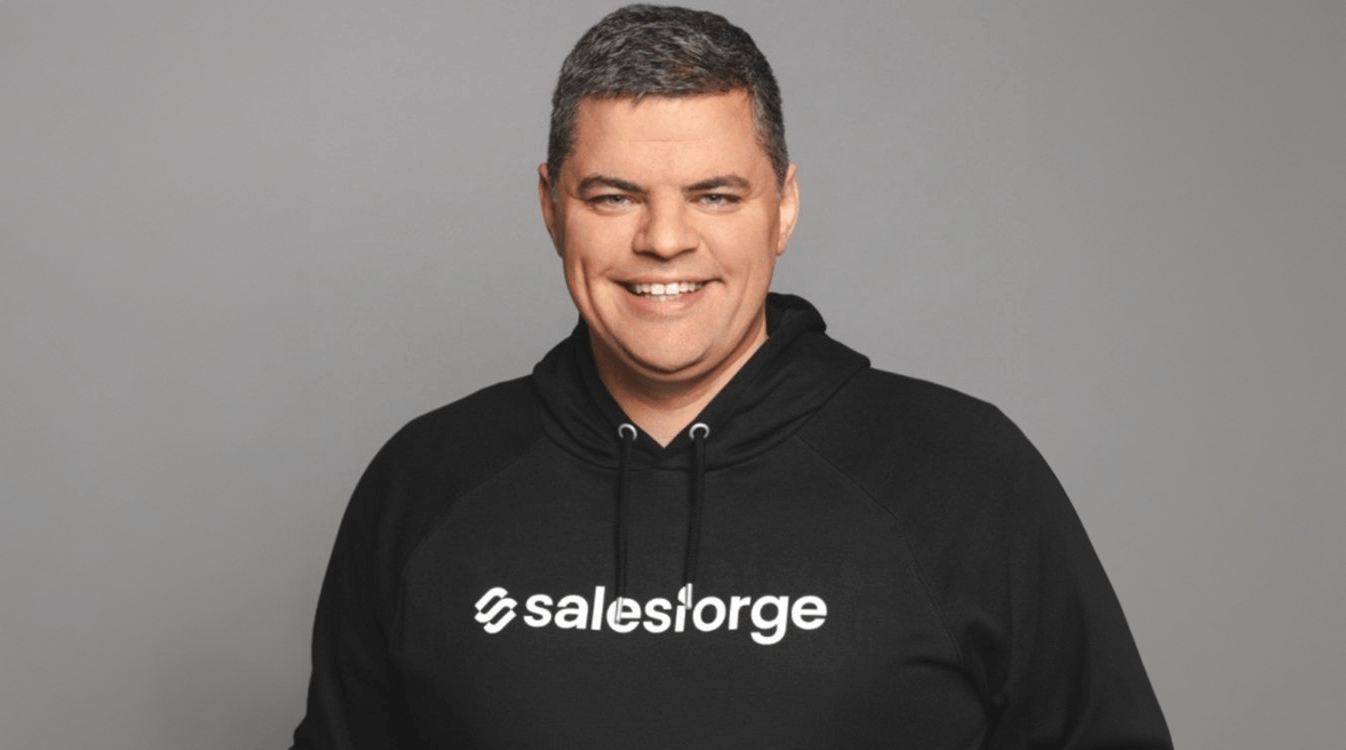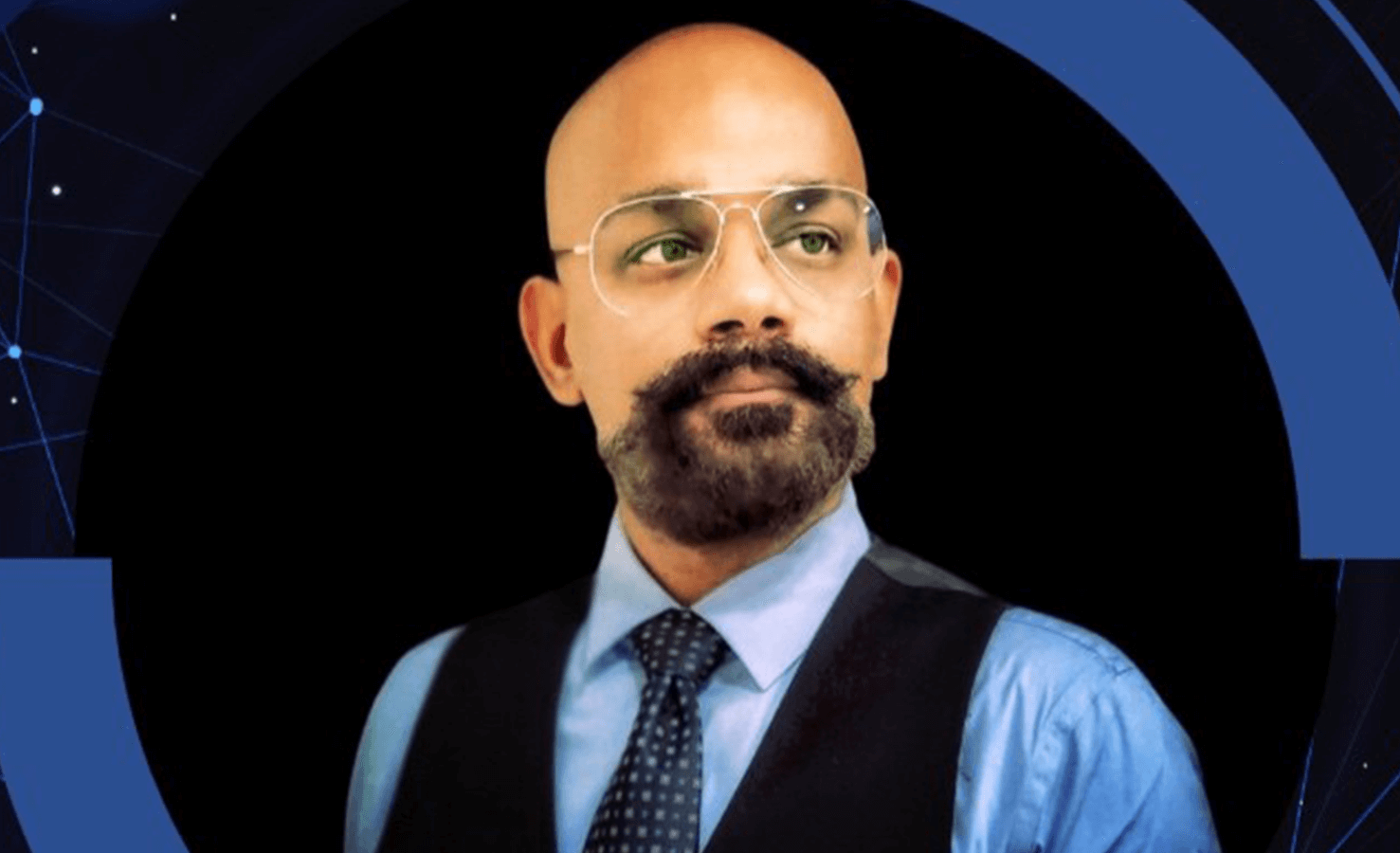
Is AI reshaping how we approach content marketing and SEO?
Sanjana and Romana, Founder of SaaStorm, dive into the role of AI in content creation, the balance between human and machine input, go-to tools and strategies, and how to avoid common AI pitfalls in modern marketing.
—
Connect with Sanjana Murali: LinkedIn: https://www.linkedin.com/in/sanjanarm/
Connect with Romana Kuts: LinkedIn: https://www.linkedin.com/in/romana-kuts/
Follow All About B2B Marketing: YouTube: https://www.youtube.com/@AllAboutB2BMarketing
![Sanjana Murali]()
Sanjana Murali
at Dealfront
Hey everyone, today we have an exciting discussion as we dive into AI assisted content. Joining us today is Romana, founder of a B2B content agency called SaaStorm. Hi Romana, welcome and thank you so much for joining. Hey Sanjana, thank you. Thank you for inviting me and it's really nice to have a chance to talk to you. My pleasure. All right, so let's start with a big picture. ⁓ As we can see, AI has transformed content marketing in so many ways.
So from your perspective, how has SEO and content marketing changed with the rise of AI? Do you think marketers should be paying attention to some key shifts? Yeah, so in general, honestly, AI is influencing SEO and content marketing every day. Every day I'm waking up and I'm checking some, I don't know, ranking positions or traffic for my clients, and I can see some very unexpected changes.
And I will say every marketeer right now needs to actually pay very, very close attention to details when it comes to SEO and content marketing. Because just to, you know, like everyone knows there's chat GBT, perplexity, other like LLMs models. And more and more people started creating AI content and some of them are doing it really nice. Like they use AI as an assistant, but someone is just like creating like a hundred articles in a day and just like floods Google with a lot of
basically spam. And as a result, you know, in Google, there's so much information and it became a problem for Google, just like, my God, how to filter everything. As a result, like in general team behind Google and Google algorithms right now is working really, really hard on kind of trying to figure out like what algorithm changes they can do to make sure that like AI content will be filtered out and
that companies that actually invest in content marketing and do a nice and quality work will be seen on Google. So yeah, it's literally like every day is, I don't know, it's a lottery. You don't know if your content is going to like go up, go down, you will be banned for something. if maybe tomorrow we will see like, Hey, big Google update. So yeah, it's like every day, every day work right now. Yeah. Every day is a new day. Literally. Yeah. How do you, how do you keep yourself updated? Because you mentioned that every day you wake up, you have something new to learn.
How do you keep yourself updated and your team? Yeah, that's a really good question. So honestly, first of all, I love learning from data and I love learning from our own data. We at Saastrom, have many clients and of course we are taking care of their blogs. So there are some clients that we create only human content, other clients only AI assisted content. And then there are clients where we create mix of content, like human and AI.
As a result, if I analyze data every day, what I do and what our team does, we can see a different kind of trends, you know, we can see that, for example, human content that had more human expertise, images, videos and everything, it starts like going up. Well, AI content can stay kind of on the same traffic or even have like drop to have a drop in organic traffic. As a result, first of all, I'm learning from our own data. I'm just like, okay.
It's interesting. can see this trends or whatever. Secondly, we are using a lot of tools, like for our AI content and these tools, they of course, they have their own blogs. They have their own newsletters. So we follow that. Like for example, we are using Surfer SEO and their founders are really active on LinkedIn and they are writing about all the updates. There is a really cool new tools that helps you to track rankings in LLM.
⁓ in NLMs, example, Nightwatch, and they also send in really nice newsletters on like, hey, pay attention, today might this happen or whatever. So I will say like on our on trends, then from newsletters from the tools that we are using, they're doing really good like content marketing and educating their customers. And the third one is honestly just being active on LinkedIn and following the right people.
Yeah, I think we should all be dedicating few hours every day for learning because there's so much new coming every day. Yeah. So you also mentioned about three types of content, human content, AI, and then both human and AI. So could you give us the difference between all three? Yeah, of course. So, you know, there's still much more types of contents, but for example, we at Saastorm, we worked with this like three content approaches. So human.
AI assisted and makes of human and AI assisted human content is clear. It's honestly is a content fully a hundred percent produced by a content writer, by a human content writer. Of course they might use AI for something. Of course they might, because everyone is using right now AI, but normally content is written by a person. This person goes and introduce some people you have subject matter expert quotes. You can see a storytelling behind.
You can like open an article and you're like, wow, cool. That's like written by a human. So that's one type of content. Normally it's for, ⁓ to tell stories, you know, to show more like experts, to talk about some data trends, some things that AI is still not that amazing in. So that's one type. The second one, AI assisted. So very, ⁓ very important to mention here is that AI assisted content is not AI generated.
AI generated is if I go to chat GPT and I'm like, Hey, write for me an article on how to maximize my revenue. I get an article, I copy paste and I am like, okay, cool. have it. That's like AI generated. AI assisted ones are the articles that, for example, we write a human editor, for example, me strategist is writing a content brief for a human writer. And then this human writer based on this brief generates AI copy.
So generates create just like AI generated copy, but afterwards does a really good like human editing. For example, we literally do like AI assisted content that involves at least one or two hours of a human editor behind to make sure that there are like relevant intro, a good transitions between sections, right conclusions that you mentioned your product, et cetera. So it's much more of let's say AI writing, but human editing.
Once in the first type is more fully human. Everything is just like basically human. And my recommendation, honestly, there are so many topics that AI can do a really good job in, they are, it's cheaper to produce AI assisted content than human content. So many times we recommend our clients basically to do mix of both. So, because I work with startups and they don't have huge budgets, but they want to rank fast.
So we create for them like the best package that for example, maybe they will write for human articles and then we will write also for AI assisted. So it's basically cheaper. You can build topical authority much faster and it just works. It actually works. We can see results from AI assisted content too. Okay. And out of curiosity, when your clients come to you and ask you to create AI assisted content,
Do they in turn ask you to produce more content because it's AI assisted and not human written? ⁓ Yeah, I will say you can have a really higher volume of AI assisted content, but not for every topic. A very easy example, for example, very easy example, for example, we have different clients. B2B SaaS can also be very different. One of our client was product in HR tech.
So basically they have a platform that helps to create online courses and online training for HR teams. So you can imagine that their topics could be quite easy. So we use AI and AI assisted content to cover topics like how to educate or like how to train and then different, different kind of.
solutions and use cases. For example, like how to train HR team, how to train hospitality staff, how to train customer service team, how to train marketing team. You can come up with variations of this, like millions. So what we did, we wrote one human article, fully by human, really nice piece. And then we asked AI to redo it for all these like 50 other topics. Because honestly, training from how to train HR team or how to train marketing team.
is not so different for AI, it's not so hard to kind of change it, but we can cover so many cool keywords on like both topics, bottom of the funnel on how to, in honestly like in a day. So that's why we could create much more content. But then if someone comes to me and they have a very complicated software on, I don't know, let's on change management in enterprise companies, like
AI will not do a great job in that. So like very important to understand not all companies, all B2B SaaS companies can actually use AI assisted content. You need to be very careful and you need to see if there is a fit. Got it. ⁓ Okay. So let's get practical. So how do you create ⁓ AI assisted content for your clients? Like what's your tool stack and how do you balance AI with human expertise?
Of course. So in general, as I mentioned, we try to do a mix of both, but for AI assisted content, so any clients that start working with us and they are like, okay, let's give it a try. Let's try AI assisted content for a bit. What we do from our side, we have a chat GBT, our like team account. And in chat GBT, we create a custom GBT per client. So every client would have their own GBT.
And this GBT is trained on their demo, their customer calls, their ICP, their style, their product pages, et cetera. So we literally train GBT and like kind of custom model just on one client's work. As a result, we literally have a chat. So like, if I will ask something, like, I don't know, tell me about this customer, this chat inside chat GBT will answer directly because they are trained based on it. And once we have it.
We actually can very easily train on like how to write the content, how to write the content brief, et cetera. So we always start with creating a content brief. If you write this content brief, Google docs very easily, a bit with AI, but more like human expertise. We just make sure that we have it written in the Google docs or like what should be covered in the articles. What paragraphs, how products should be mentioned, et cetera. Then we take this content brief and we.
put it into this chat GBT and we like, is is trained on this client and we like, okay, produce for me an article. This is the length. This is an amount of keywords needs to be used. This is a complete structure. then AI basically chat GBT creates for us this and what we do then it's actually time for human expertise, a hundred percent. So our like, we call them like AI content strategies, AI content producer. So they take this copy.
And they make sure that it's actually has human touch. So we make sure intro is nice. make AI is still not perfect. You know, we make sure that everything is correct. We fact check everything. add internal links. And for this, we also use Surfer SEO. One of my favorite SEO optimization tools, honestly, on the market. So we make sure that other
content. So basically a human editor is editing the content and also optimizes for SEO with a server SEO. So once we get a score in this tool, there's like a score that you can get for content. And if you get a score 70 plus, it has a nice human editing. We're like, okay, good to go. So that's actually how it would be the article. But then there's a second part of it. We also make sure that we have images, maybe some videos. For example, I work with some bootstrap startups that
are very involved and they are okay to record a Loom video for me and include it in the article. So we do AI, human editing, and then human touch in terms of some visual implementation. And yeah, then we push it publish and we request indexing in Google search console and we just pay attention and make sure you know that keywords are ranking and yeah, that this article is good. If it's not, we revisit, we optimize and do the same. That's brilliant.
So could you also share, you know, kind of results your clients see based on your AI-assisted content planning? Yeah, yeah, of course. One of my favorite clients to talk about is Lingya. We actually had their case study on our website. And it's a really interesting Swedish startup in educational tech. It's actually like HR tech, ad tech. And they came to us, I think a year and a half ago.
And they came to us with nothing. So they had like no inbound leads at all. They had no traffic. They even didn't have a blog, just like, so you understand, they didn't have a blog at all. So they came to us and of course, as a startup, they didn't have huge budget, but they were one of our first clients and we're like, let's give it a try. And a year and a half ago, not everyone was still doing a lot of AI assisted content. So we created for them a plan and we realized like content plan.
And we realized that with their budget, and if you will always do a human writer, we can publish more than four articles a month, but they wanted to have like growth, you know, like they wanted to grow fast. So we were like, let's experiment. They were very open for experiments. And we were like, look, we have the software, we using different tools. using Surfer, SEO, Byword, chat, GBT, like be our experiment. Let us create for you AI assisted content.
And they gave us green lights. They're like, okay, sure. And we actually kind of found the different topics for them that would be easy to cover with AI. I already mentioned previously, it's different, like how to train HR team, how to train hospitality staff, how to train customer service and all this, how to train and then long tail keyword. And we started producing 20 articles a month. So we were covering five articles with the human writer.
the topics that were more intense, hard and needed a hundred percent human attention. And then we were covering 15 articles that were AI assisted. And honestly, we went from zero to 15,000 monthly visitors in nine months. Okay. So you can imagine that like when website is fully new and has nothing, it's very hard to build topical authority. It's not going to rank so fast.
But because we gave a really good human expertise, we were using good tools and we were very consistent and we were publishing 20 articles a month, like every month, plus every article, even AI assisted one had visuals, images, et cetera, because we had a designer on our team. We started seeing AI content driving even more traffic than human written content because it was relevant and it was also driving demos. So honestly.
While saying like, you talk about like 75 % of all the content was AI assisted, but we still were able to get at least one demo booked coming from blog. So we were getting like 25, 30 MQLs every month. So as a result, it was like really amazing because in nine months we had more than 20 MQLs, more than 20 leads that came through content, actually AI assisted content and booked the demo on their website.
Amazing results. would honestly say it works if you do it right. You just like, you need to understand that AI is a tool. It's not a replacement of human. It's nothing. It's just like the same as CRM for salespeople. AI is the same kind of tool for content marketeers. It just helps you. And if you do it smart, you can have amazing results. Yeah. That makes a lot of sense. I think AI should be like a co-pilot and not a replacement for human creativity.
I think copilot is the perfect word here. Awesome. So, ⁓ another question out of curiosity. Do you see the line between helpful and harmful AI use and content creation? What's your take on this? I definitely see a harmful way of using AI. So the problem is here that, once again, startups many times are put strapped.
don't have money or whatever. And they think that like they don't need content teams. They don't need SEO teams. They have chat GPT or perplexity. They are good. So what they do, they create a lot, a lot of content and publish it on their website just by like with AI. And they're like, yeah, I am doing content marketing or SEO. But as a result, there are so many penalties because like it's a spamming content. It's probably duplicates. It's, ⁓ there's a lot of just like reusable stuff from
You know, from another competing content, there are no images. It's like a cheap and fast way to do things, but then they don't see any results and they become very skeptical about SEO. So they go on LinkedIn and they write like SEO is dead. Like SEO doesn't work. SEO is terrible. And some people can read it and like, my God, yeah, I don't want to invest in SEO anymore. You know, so that's how it works. Or I just have this.
Because sometimes I have calls with potential clients, they come to me and say like, Hey, Romana, we just like started doing this AI content and it doesn't work. Can you fix it? And the problem that's exactly where is the harm. You cannot fix it overnight. If you already put your domain somewhere in like spam in Google's like, you know, in Google algorithms that it sees that you have a lot of spammy content, you cannot come to me and say like, Hey, fix it, please.
So the harmful way is that like some people think it's very cheap and fast to achieve results. They do it, it doesn't work. And they start being advocates that SEO doesn't work. Or they do, they do it cheap. They don't see results. They come to agencies, hey, hey, fix it. Agencies cannot fix it in two months. And they again end up like SEO doesn't work. SEO works, better invest.
thousand euros a month, then like 20 euros for ChedGBT, but like at least something and have some kind of expert behind it. So I guess those people who say SEO is dead on LinkedIn, I these are the people that we're talking about. Yeah, I think so. Because like for me, SEO works. For my agency, it works. For my client, it works. I even for Dealfront, it works. So why it doesn't work for you? Like come to me and we will talk and we will see, but like you're probably just doing something wrong.
Right. Amazing. ⁓ So one last question. So for marketers who are new to AI, what advice would you give them on getting started? Like any must have tools or best practices that you recommend? That's a really good question. Honestly, if you as a marketeer just starting, I think the best what you can do is to learn how to create a right prompt. So how to write a prompt in chat GPT or any other LLM.
There's a lot of courses on how to write prompt. There's a lot of LinkedIn experts at writing about it. And I think the most important is to learn how to build, write GPTs, for example, how to train them. So I think it just like, ⁓ to try it's about error. It's about trying. It's about making mistakes. But for example, if I were them, I would just like, try to build GPT, let's say for their own LinkedIn.
I would give their LinkedIn posts, I would give their style and just like try to chat, for example, train GPT to write LinkedIn posts. like to try. If you get through that, you will later train your GPT to do AI assisted content for your company or whatever. So that's the first one. And second one, honestly, all these cool tools, even like Surfer SEOs that I mentioned previously, they have their academies on how to use AI right now. So they can go through their courses.
And my last recommendation, I personally go to almost every webinar that AirOps does. So AirOps is a really cool AI workflow builder for SEO. And they are creating amazing, amazing webinars right now with all the AI content experts. I think they do it weekly. And I like even after what, eight years in content marketing, I go and I learned something new. So I would honestly follow their events. They are really doing an amazing job there.
Okay, that's cool. I'll also like share the links in the description. Yeah. Right. Anything else before we wrap up? And yeah, I just wanted to say thank you for having me here. I am, I hope that this, you know, podcast will help someone to actually not make AI and SEO mistakes. And yeah, it was really nice chatting with you. It was my pleasure too. Thank you so much for sharing your expertise on AI assisted content. ⁓
Yeah, this was a fantastic discussion. So before we wrap up, can you tell us where can our viewers connect with you and learn more about your work? Yeah, of course. You can connect with me at my LinkedIn. It's will be rumanakuts. Or you can go to sastron.io and that's my agency where you can also find me and our work and our case studies. And I would love to connect with you on LinkedIn. Amazing. I'd also share the links in the description so people can check it out.
Amazing. That's all. I'm sure our audience found it valuable. Looking forward to chatting with you again. Bye bye. Yeah, thank you. Bye bye. See ya.



